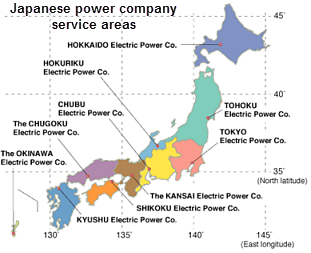Power utilization is progressively turning out to be significant in expanding monetary development for some African economies. To an ever-increasing extent, the turn of events of financial exercises like modern creation furthermore, the help business is driving development and expanding yield in many non-industrial nations. This has required more appeal for and utilization of power. Energy Rates shows the consumption of energy which helps find relations. The beginning of financial advancement in Botswana carried with it expanded interest for power by both family and business areas. Botswana’s generally high financial development has over the years been supported by the mining area, particularly precious stone mining. Lately, there has been a coordinated exertion in the enhancement of the economy with expanded action in different areas.

Broadening has carried with its higher dependence on power
Contrasted with other Southern African nations, the development in the nation’s interest for power is the most elevated, remaining at 6%, Southern Africa Force Pool (SAPP). The interest and utilization of power inside the Botswana economy expanded generously from the 1980s. Anyway, there remains a shortage in the country’s power age limit bringing about expanded dependence on imports from adjoining nations particularly South Africa. As of now, power import, age, and transmission are supervised by the Botswana Power Partnership (BPC). Morupule, the sole power-producing power station in the nation gives around 33% of the country’s power request and the deficiency is met by imports from South Africa, Mozambique, and the SAPP. Somewhere in the range of 2009 and 2010, the deficiency in the power age in South Africa constrained the specialists to confine their inventory of power to Botswana. Botswana experienced serious burden shedding which influenced families and organizations. It is assessed that the time of burden shedding cost the economy a large number of dollars.
Plans are developed and executed into the public directly
The country zap plan executed in Botswana to interface more families to the public power will increment interest for power and put considerably more focus on its wellsprings of power. The expected lack in the district’s power pool and from different nations will indeed influence the economy contrarily. Studies looking at the relationship between power utilization and financial development can be summed up into two primary classifications, those that decide the idea of the relationship between power utilization and financial development and others that look at the bearing of causality between power utilization and financial development. This investigation adds to the writing in two significant ways. Right off the bat, it is critical to comprehend the precise nature of the connection between development and power utilization. This is because of the way that the acknowledgment of the significance of power for the economy has provoked the public authority to increment the power creation limit by building new plants to decrease both the setback between power interest and age and the country’s dependence on outside power sources. This examination consequently expects to fill that hole. Besides, this examination uses econometric advancements in its technique, utilizing an ARDL limit testing as a way to deal with cointegration to decide both the long-run and short-run effects of power utilization on monetary development. People have to accept all the new plans and then that all can execute.
